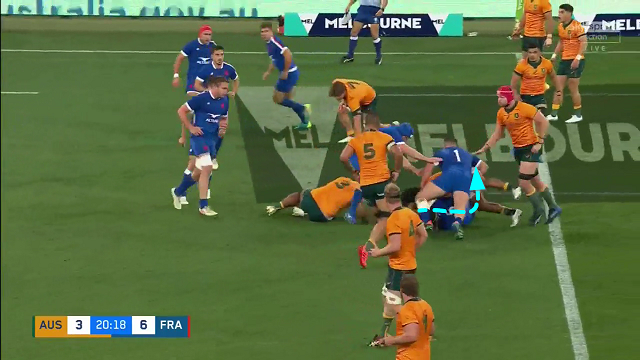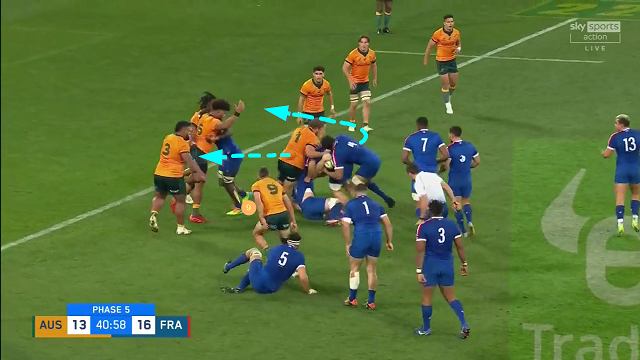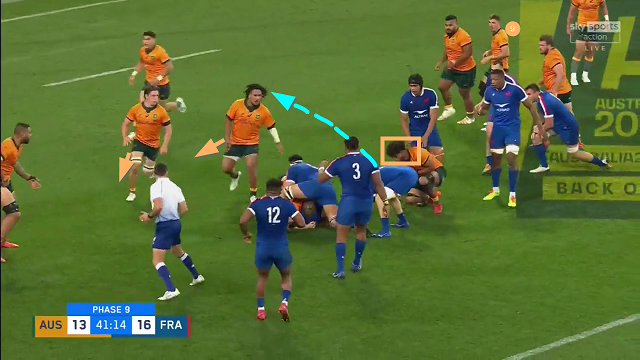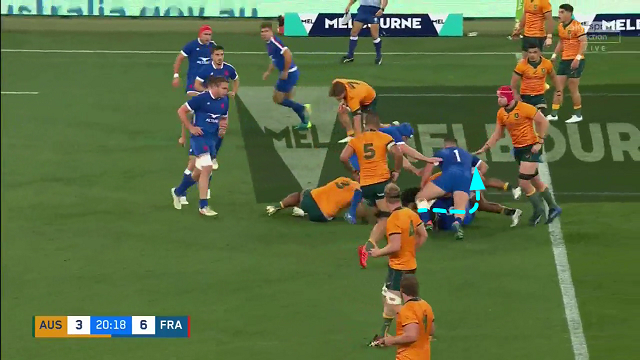How to make the pick-and-go really ‘go’
With the ever-increasing speed of modern defences, time and space is at a premium for the attacking side. It has become difficult for the offence to move the ball wide without finding the play cut off before the ball ever reaches the side-line!
I have looked at ways in which the law-makers have tried to fix the issue by encouraging the production of ‘lightning quick ball’, or LQB from the ruck. It has certainly worked out well in the – Why the english premiership is ahead of the game.
At international level, defences are even quicker to recover and spread out to embrace the whole width of the field, so attacking teams can look at implementing effective patterns much closer to the site of the ruck.
The pick-and-go is often neglected, at least in field positions outside the opposition 22. France, on their recent three-Test tour of Australia, showed how productive a well thought out pick-and-go game can be, even in the middle of the field. The pick-and-go can help condense the defence around the ruck, and it carries minimal risk because so few passes are being made.
Let’s take a look at some of the features that make the pick-and-go game tick over as smoothly as clockwork. The following examples come from the second Test between Les Bleus and the Wallabies in Melbourne.
The first short sequence occurs in a field position in between the two 40 metre lines, where the attack might typically look to expand play off the second pass. The French chose to keep the ball tight instead
What are the keys to the kingdom on a pick play? There are some basic building blocks that need to be in place for the phase to work.
Firstly, you need a pick-and-go expert to run the ball from the base – the French hooker, Gaëtan Barlot, is in pole position.
Secondly, you need the defensive number 9 as far away as possible from the scene of the action. The scrum-half is often the brains of the operation around the ruck, and responsible for the sorting of the forward defence. In this instance, the Wallaby half-back Jake Gordon is out of shot on the left wing.
Thirdly, you need one of your cleanout players to be able to create a hole for the following play. Here, the France loose-head prop Jen-Baptiste Gros is performing what is known as a ‘Wall’ block in American Football. The blocker ‘walls’ the defender away from the direction the next phase is intended to go:

Gros angles his cleanout to the left, so that Barlot can run into the space created to his right.
Now let’s look at a much longer sequence from the second half of the game. Once again, it starts from midfield rather than the opposition 22
The sequence begins with a one-out run by a France forward, which engages the defensive number 9 and forces the Wallaby forwards to make a decision about which side of the next ruck they want to defend.
Jake Gordon ends up making three consecutive tackles in three phases. He is being effectively ‘over-loaded’, and prevented from directing the Australian forward defence:

Barlot is the preferred runner from the base, and the Wallaby forward defence is in a state of disorganisation, with their half-back still getting back to his feet from the previous tackle. The two ‘guards’ on either side of the ruck are too far apart, and that gives Barlot the space he needs up to carry purposefully up the middle
As the phases unfold, there is another terrific example of a ‘wall’ block by the France number 6 Ibrahim Diallo on his opposite number, Rob Valetini:

That creates a nice seam for the France number 4 Pierre-Henri Azagoh to run into – again with Gordon away from the scene of the action
A one-out run forces the Australian forwards to make a decision about which side of the ruck to defend, while Gordon is walled off by another block by Gros.
The pick-and-go framework enables the offence to run repeat plays at the same defender quite easily, and Rob Valetini is still getting back to his feet from making the previous tackle – just as Barlot is ready to roll:

Les Bleus cover the distance from the Australian 40m line to the shadow of the Wallaby posts in nine phases, but only making three passes along the way. The risk of handling error, interception or a turnover in contact is as low as it can be.
Summary
A well worked-out pick-and-go game is an excellent resource in the battle against ever-increasing defensive line-speed, and the competition at the tackle area. If you can force the defence to condense around the ruck, the opportunities to play out wide arrive quite naturally.












.jpg)

.jpg)







